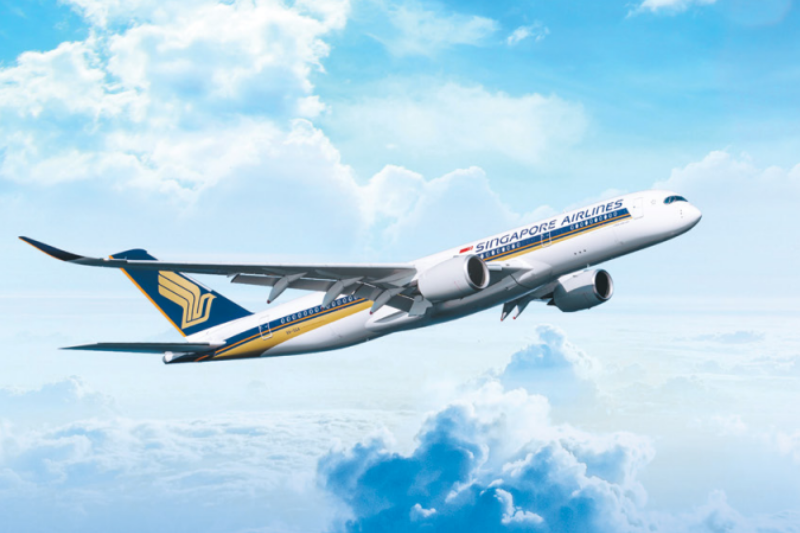Dark Skies Ahead: Can Singapore Airlines See its Profit Recover?
Singapore Stock
2024-11-21 16:11:24
2.31W
With more competition in the skies, can Singapore’s flagship carrier witness a profit recovery?

A mixed set of earnings
SIA released its second quarter of fiscal 2025 (2Q FY2025) earnings recently for the period ending 30 September 2024. It was a mixed set of earnings – the airline’s revenue increased but its net profit fell off a cliff. Revenue for 2Q FY2025 inched up by 2% year on year to S$4.8 billion. However, total expenses jumped 14.7% year on year to S$4.5 billion with the main culprit being a 10.6% year-on-year increase in net fuel cost. As a result, operating profit plunged by 59.3% year on year to S$325 million and net profit tumbled 59% year on year to S$290 million. After hitting a high of S$734 million in 1Q FY2024, SIA’s net profit has been declining over the past five consecutive quarters. The picture wasn’t much better for its first half of fiscal 2025 (1H FY2025). Although total revenue increased by 3.7% year on year to S$9.5 billion, net profit came in at just S$742 million and was down nearly 49% year on year. SIA saw many categories of expenses rising sharply – staff costs rose 10.4% year on year while handling charges climbed 19.6% year on year. Passenger costs also surged by 26.4% year on year to S$480 million for 1H FY2025. There was a bright spot, though. SIA generated a positive free cash flow of S$1.1 billion for 1H FY2025, although this was 40% lower than the S$1.9 billion churned out a year ago. An interim dividend of S$0.10 was declared, unchanged from a year ago. One problem flagged out by SIA was the rapid expansion of its capacity, which did not keep pace with the growth in passenger traffic. The group’s passenger capacity expansion was 11% but passenger traffic growth was just 7.9%.Expanding its fleet and building its network
SIA has continued to build up its fleet and as of 30 September 2024, the group’s operating fleet consisted of 205 aircraft with an average age of seven years and five months. The airline has 84 aircraft on order and expects to end FY2025 with 204 aircraft. SIA recently announced a S$1.1 billion plan to upgrade and retrofit its fleet of 41 Airbus A350-900 aircraft with new long-haul cabin products. The installation will be a multi-year programme to elevate passengers’ flying experience. SIA has projected its capital expenditure to be S$2.9 billion for FY2025 but this jumps to S$4.6 billion in FY2026 and then S$4.8 billion in FY2027. With higher anticipating capital expenditure, this may result in higher depreciation charges for the airline. Meanwhile, the airline also plans to boost flight frequencies and passenger capacity across its network next year, with weekly services to destinations such as Adelaide, London, Milan, and Rome.Air India-Vistara merger
SIA expects the Air India-Vistara merger to be completed by the end of November. The group will own a 25.1% stake in the enlarge Air India and recognise a non-cash accounting gain of around S$1.1 billion when the transaction is completed. Air India will also be equity-accounted in SIA’s books. However, SIA will need to inject roughly S$498 million in additional capital within the same month to subscribe for new Air India shares. The good news is that Air India and SIA agreed to significantly expand their codeshare agreement to add 11 Indian cities and another 40 destinations to their network. It is the first extension expansion of codeshare in the last 14 years. That said, it remains to be seen if this expansion will translate into better overall profitability for both Air India and SIA, and investors will need to track the earnings of each to determine this.Other initiatives
Elsewhere, SIA is also creating new revenue streams beyond flying. The group boasts an impressive database of 9.4 million KrisFlyer numbers, more than double the number pre-pandemic. This loyalty programme will enable SIA to sell merchandise and attract revenue through other means by tapping into its member base.Get Smart: Macroeconomic uncertainty to continue
Management believes that air travel demand will remain robust in 2H FY2025. However, the operating landscape will continue to be competitive. Coupled with macroeconomic uncertainty and higher fuel prices, SIA could see continued financial stress going forward. Its commitment to upgrading its long-haul cabins and increasing its network may also result in higher expenses in the coming months. SIA will probably need more time before it can see a sustained profit increase. This could be the fastest way to jump from a “newbie” investor to a seasoned pro. Our beginner’s guide shows everything you need to know to buy your first stock and beyond. Click here to download it for free today. Follow us on Facebook and Telegram for the latest investing news and analyses! Disclosure: Royston Yang does not own shares in any of the companies mentioned.Disclaimer: The views in this article are from the original Creator and do not represent the views or position of Hawk Insight. The content of the article is for reference, communication and learning only, and does not constitute investment advice. If it involves copyright issues, please contact us for deletion.